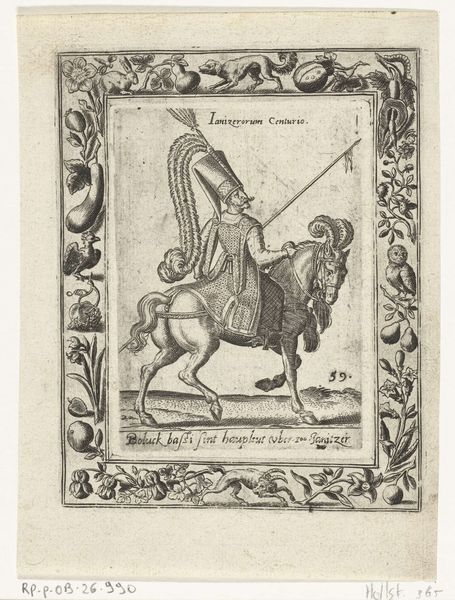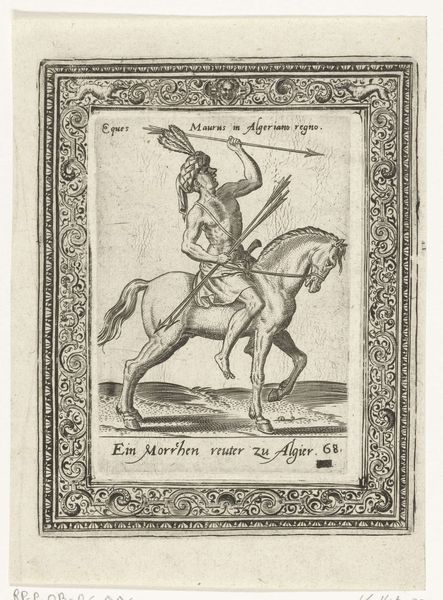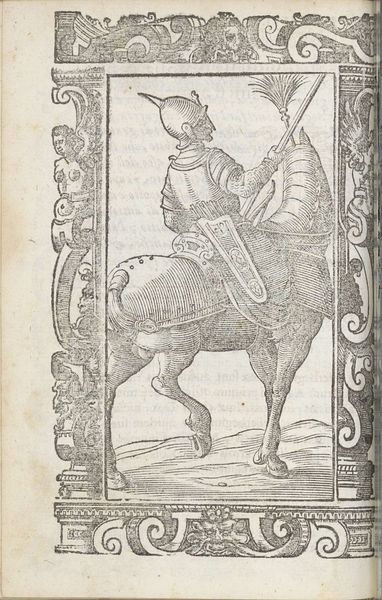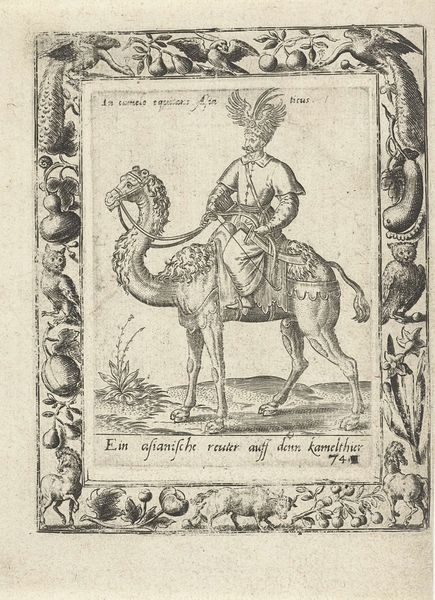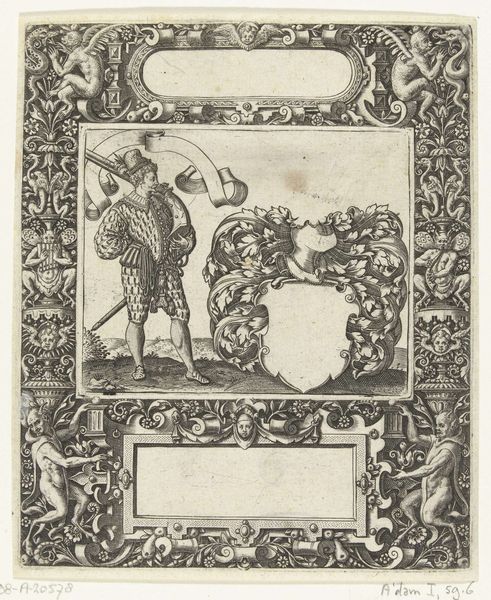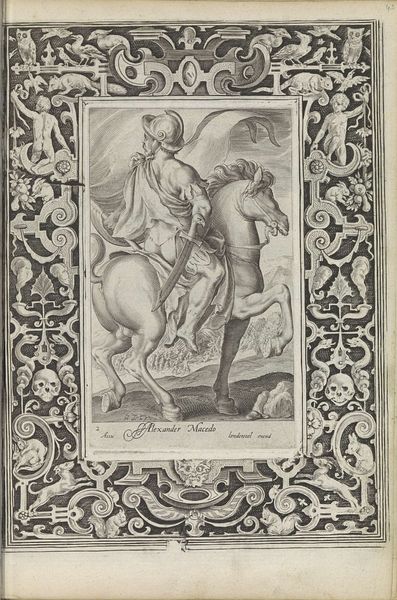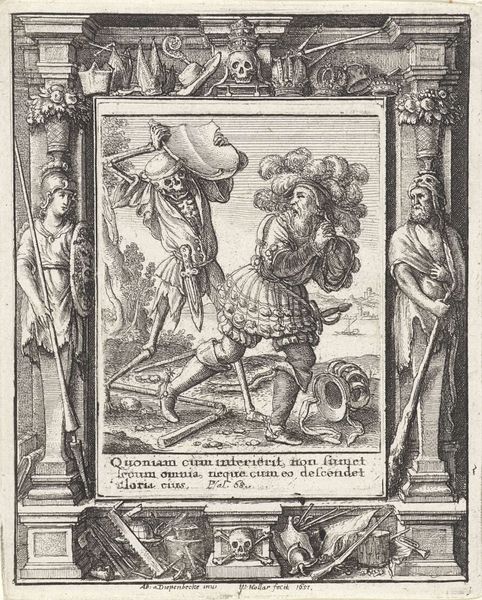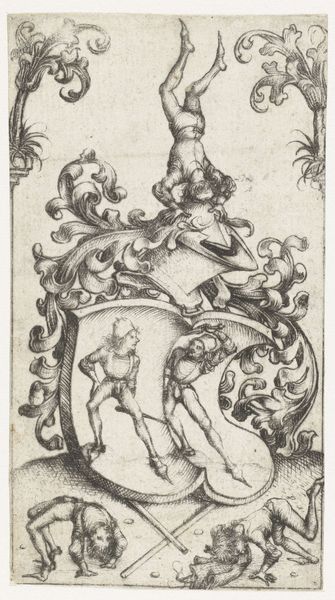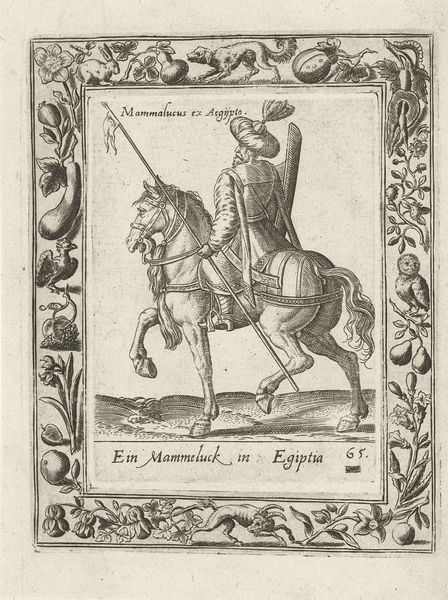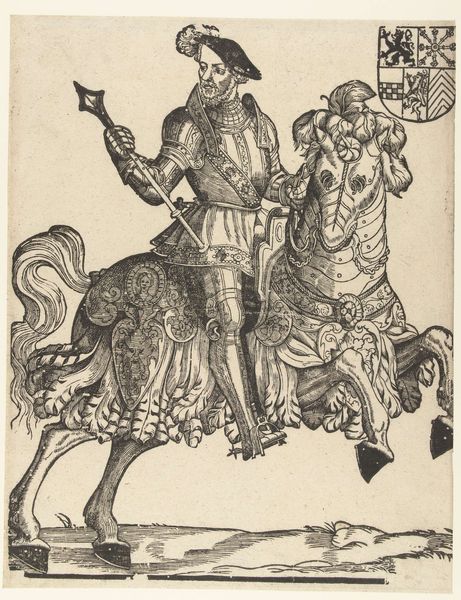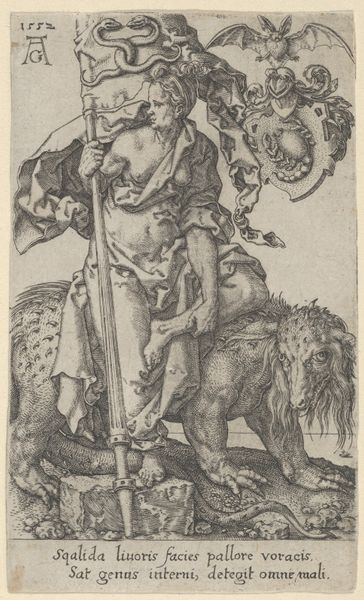
drawing, print, engraving
#
drawing
#
pen drawing
# print
#
landscape
#
11_renaissance
#
islamic-art
#
engraving
Dimensions: height 105 mm, width 76 mm, height 140 mm, width 112 mm
Copyright: Rijks Museum: Open Domain
Curator: Ah, this print by Abraham de Bruyn, dating back to 1577, is titled "Two Moors on a Dromedary." The artwork, an engraving really, is currently held here at the Rijksmuseum. Editor: It feels so meticulous! Like looking through an old, beautifully etched magnifying glass into another world. A world with dromedaries and very serious travelers, naturally. Curator: The artist uses such precise lines. Consider the interplay between the detail on the dromedary’s elaborate headpiece and the somewhat bare torsos of the riders, poised with their bows. And notice that the image is enclosed by a frame with various objects! Editor: Right? It's that decorative border that gets me, it feels like it's trying to contain something… wild, maybe? Like a snapshot from an exotic dream. The combination of hunting scenes at the borders, and then two archers who appear also ready to attack sitting atop a camel! A contradiction! It creates an enigmatic feeling! Curator: The work belongs to a larger series called *Omnium pene Europae, Asiae, Aphricae et Americae Gentium Habitus*. This collection sought to document the customs and costumes of people across the known world at the time, highlighting De Bruyn's ethnographic interests. The artist clearly intended to not only provide documentation but to showcase unfamiliar attire. Editor: Thinking about that series, there’s an othering at play, isn't there? A sense of the unknown and almost the monstrous, captured for a European audience. But at the same time, the detail and care also betray a strange sort of admiration, don't you think? Curator: Indeed. De Bruyn’s decision to include the Latin and German inscriptions suggests he aimed to reach an educated audience, eager to expand their knowledge through both visual and textual means. It acts as a bridge, attempting to provide accessibility to new concepts for an inquisitive public. Editor: What lingers is that dance between scientific curiosity and maybe some underlying exoticization that really makes me think! I suppose the charm is that there remains space to question De Bruyn's motives, long after he set down his burin! Curator: I concur. Perhaps it will inspire people to go find out even more about this amazing era.
Comments
No comments
Be the first to comment and join the conversation on the ultimate creative platform.
